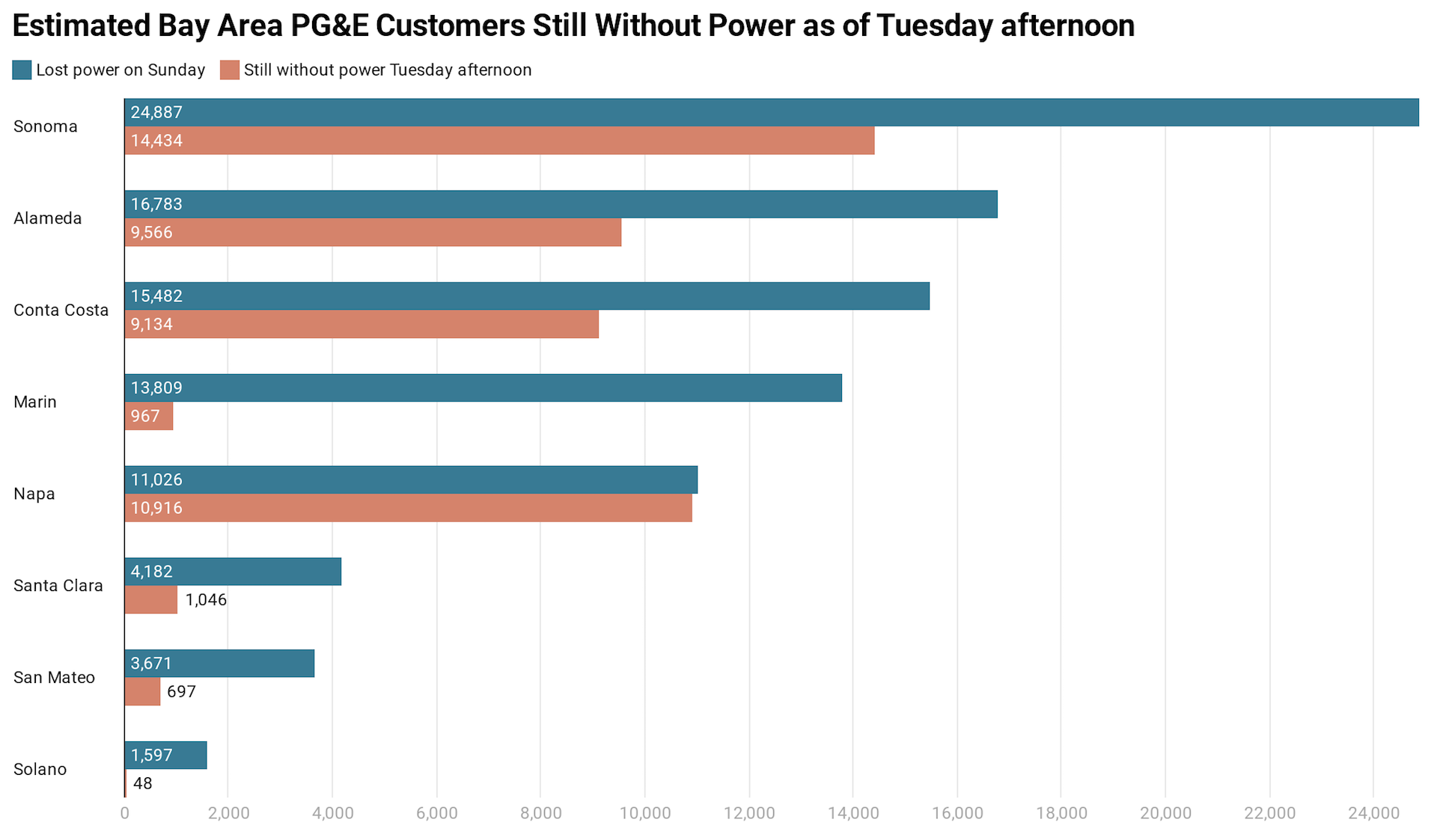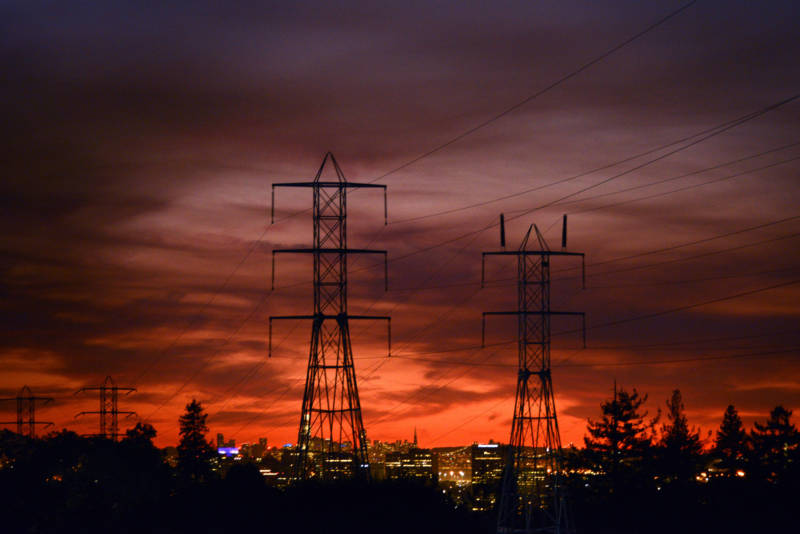Update, 10 p.m. Tuesday, Oct. 27: PG&E reports that the process of restoring power to the wide area of Northern California that was blacked out during the high winds of the past 48-plus hours is nearing completion.
In a statement issued late Tuesday, the utility said that crews had gotten electricity flowing again to about 335,000 of the roughly 345,000 homes and businesses that had power shut off Sunday. The outages affected about 1 million people in 34 counties
Mark Quinlan, the PG&E executive who serves as the company’s incident commander during public safety power shutoffs, said during a 6 p.m. briefing that all but 8,000 of the blacked-out customers should have their lights back on by late Tuesday night. That last group would probably have their lights on by midday Wednesday.
“We anticipate having power restored to those customers right around noon,” Quinlan said. He said the delay in restoring electricity to those customers — located mostly in the central and northern Sierra Nevada foothills — was due to persistent high winds that had slowed the safety inspections the utility must complete before re-energizing its lines.
About 2,700 Bay Area customers in the shutoff zone still appeared to be without power as of 9 p.m. Tuesday, including about 1,400 in Napa County and 1,100 in Sonoma County.
Quinlan said that aerial and ground inspections of the thousands of miles of lines that had been shut off had found 130 instances of apparent wind damage, a number he said was certain to grow.
This week’s shutoff was PG&E’s fifth since early September and the biggest the utility has conducted this year. PG&E officials have emphasized during each of the 2020 wildfire safety outages that it has been focused on limiting the shutoffs’ scope. This season’s blackouts have been significantly smaller than those in late October 2019, when at one point nearly 1 million residences and commercial establishments — or about 3 million people — were left without power for an extended period.
The National Weather Service is forecasting continued dry, warm weather over the next week — but without a recurrence of the extreme winds that triggered this week’s power shutoffs.
Update, 3:30 p.m. Tuesday, Oct. 27: PG&E said it had restored power to more than 228,000 of the approximately 345,000 customers who lost power in the wildfire safety shutoff that started Sunday amid high winds and extremely dry conditions.
As winds subsided, the utility said it gave the “all clear” Tuesday afternoon for crews to begin inspecting transmission and distribution lines in most areas still without power. PG&E officials said they expected to restore electricity to the roughly 117,000 customers still in the dark by late Tuesday night or early Wednesday morning.
By noon Tuesday, about 44,000 customers in the nine-county Bay Area still did not have power, PG&E said. That included roughly 9,560 customers in Alameda, 9,130 in Contra Costa, 970 in Marin, 10,900 in Napa, 697 in San Mateo, 1,045 in Santa Clara, 47 in Solano and 14,400 in Sonoma.

PG&E crews have to inspect over 17,000 miles of power lines for damage or hazards before all customers have been restored, the utility said. That effort involves nearly 1,800 ground patrol units, 65 helicopters and one airplane. At least 36 instances of weather-related damage and hazards have so far been identified in the affected areas, the company said, including downed power lines and vegetation on lines that could have caused wildfire ignitions if the lines had not been de-energized.
The threat of wildfires sparked by the utility’s equipment, however, was not over in many parts of PG&E’s vast service area. Although the red flag warnings for lower elevations in the Bay Area and Santa Cruz Mountains have expired, warnings were extended for the North Bay mountains and East Bay hills until 5 p.m. Tuesday.

